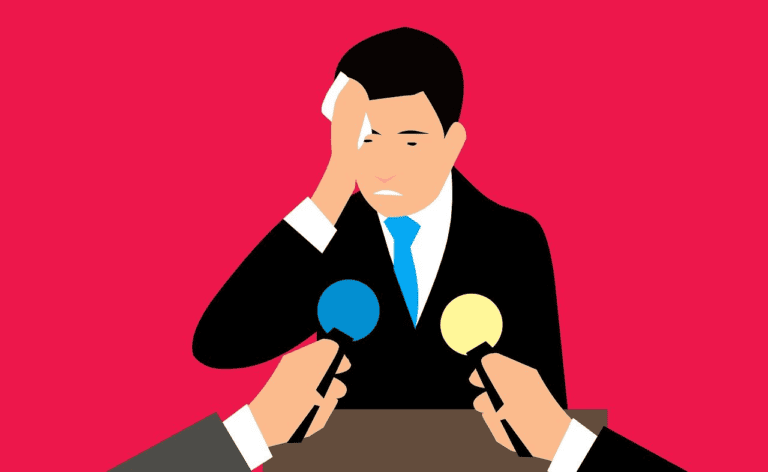From Generalized Worry to Social Fears: Anxiety's Types
Shift from chronic worrying to intense fear of judgment by understanding anxiety's types. Generalized Anxiety Disorder (GAD) manifests with persistent worrying, while Social Anxiety Disorder (SAD) triggers fear in social scenarios. Treatment like Cognitive Behavioral Therapy (CBT) and mindfulness aids symptom management. Panic Disorder brings stress-induced panic attacks, managed with CBT and exposure therapy. Specific Phobias, from animals to situations, require tailored CBT techniques. Obsessive-Compulsive Disorder (OCD) involves intrusive thoughts and repetitive behaviors, treatable with exposure response prevention. Coping strategies and integrated care are essential for dual burdens. Explore further into anxiety's complexities for optimal management.
Key Takeaways
- Generalized Anxiety Disorder involves chronic worrying and is treated with CBT and mindfulness techniques.
- Social Anxiety Disorder includes intense fear of judgment in social situations, leading to avoidance behaviors.
- Panic Disorder involves stress-triggered panic attacks and agoraphobia, treated with CBT, exposure therapy, and medication.
- Specific Phobias, ranging from animals to situations, are managed with CBT techniques like exposure therapy.
- Obsessive-Compulsive Disorder entails intrusive thoughts and repetitive behaviors, treated effectively with exposure response prevention therapy.
Generalized Anxiety Disorder (GAD)
Generalized Anxiety Disorder (GAD) is a condition characterized by chronic worrying that's disproportionate to actual situations, often leading to physical symptoms and impairment in daily functioning.
Cognitive Behavioral Therapy (CBT) is a widely used treatment for GAD, focusing on identifying and challenging maladaptive thought patterns. This therapy aims to reframe negative thinking and behaviors.
Mindfulness techniques, such as meditation and deep breathing, are also effective in managing GAD symptoms by promoting present-moment awareness and reducing the impact of excessive worrying.
Research suggests that combining CBT with mindfulness techniques can enhance treatment outcomes for individuals with GAD. These evidence-based approaches provide practical tools to help individuals better cope with the distress and impairment associated with GAD.
Social Anxiety Disorder (SAD)
Social Anxiety Disorder (SAD) is characterized by an intense fear of judgment and embarrassment in social situations, often leading to physical symptoms like blushing, sweating, or trembling. Individuals with SAD may avoid social interactions or endure them with significant distress.
The fear of judgment drives this avoidance behavior, impacting various aspects of daily life. Social avoidance can lead to isolation and hinder relationships, education, or career opportunities. The fear of judgment in SAD isn't merely a fleeting concern but a persistent, overwhelming worry that can be paramount.
Understanding the mechanisms behind this fear is essential in developing effective therapeutic interventions to help individuals with SAD navigate and manage their social fears.
Panic Disorder and Agoraphobia
Panic disorder and agoraphobia often co-occur, presenting challenges in daily functioning and requiring targeted therapeutic interventions to address their debilitating effects.
Panic attacks, hallmark of panic disorder, can be triggered by stress, major life changes, or even specific phobias. Coping strategies like deep breathing, mindfulness, and grounding techniques are commonly used to manage panic attack symptoms.
Agoraphobia, which often accompanies panic disorder, involves avoiding places or situations that may trigger anxiety or panic attacks. Treatment options for agoraphobia include cognitive-behavioral therapy (CBT), exposure therapy, and medication.
Success rates vary, but CBT has shown promising results in helping individuals gradually confront and overcome their fears, leading to improved daily functioning and quality of life.
Specific Phobias
The intersection of specific phobias with related anxiety disorders highlights the complex landscape of fear-based conditions that can greatly impact daily functioning and quality of life. Specific phobias often originate in childhood and can persist into adulthood, affecting approximately 12% of the population.
These phobias can range from fear of animals to fear of specific situations like flying. Treatment for specific phobias typically involves cognitive-behavioral therapy (CBT) techniques such as exposure therapy and relaxation strategies. Understanding the triggers of these phobias and implementing effective coping strategies is vital in managing the overwhelming anxiety they provoke.
Obsessive-Compulsive Disorder (OCD)
Obsessive-Compulsive Disorder (OCD) manifests as persistent, intrusive thoughts and repetitive behaviors that greatly disrupt daily life and functioning. People with OCD often experience intrusive, distressing thoughts that lead to compulsive rituals aimed at reducing anxiety. Cognitive behavioral therapy, especially exposure response prevention, is considered the most effective treatment for OCD. This therapy involves exposing yourself to the source of your obsession without engaging in the compulsive behavior that reduces anxiety. By breaking this cycle, individuals can learn to manage their symptoms better. Below is a table summarizing key aspects of OCD:
| Key Aspect | Description |
|---|---|
| Intrusive Thoughts | Unwanted, distressing thoughts that cause anxiety and discomfort. |
| Repetitive Behaviors | Rituals or actions performed to alleviate the anxiety caused by obsessions. |
Post-Traumatic Stress Disorder (PTSD)
Characterized by intense psychological distress following exposure to traumatic events, Post-Traumatic Stress Disorder (PTSD) manifests as a complex mental health condition affecting individuals worldwide. Trauma triggers can vary widely, from combat experiences to natural disasters, leading to persistent symptoms like intrusive memories, avoidance of triggers, negative changes in mood and cognition, and alterations in arousal and reactivity.
Hyper vigilance, a key feature of PTSD, involves being constantly on edge, easily startled, and hypervigilant for signs of danger. This heightened state of alertness can have a substantial impact on daily life, relationships, and overall well-being.
Effective treatments for PTSD often involve a combination of therapy and medication to help individuals cope with and recover from the lasting effects of trauma.
Comorbidities With Anxiety
Anxiety frequently coexists with various mental health conditions, highlighting the importance and interconnected nature of psychological disorders. Individuals with anxiety often experience comorbidities such as chronic pain and sleep disturbances. Chronic pain conditions, such as fibromyalgia or migraines, are commonly associated with anxiety disorders. The experience of chronic pain can worsen anxiety symptoms, creating a cycle of distress and discomfort.
Sleep disturbances, including insomnia or nightmares, are also prevalent among those with anxiety. Disrupted sleep patterns can heighten feelings of anxiety and contribute to a decreased quality of life. Understanding and addressing these comorbidities is vital in effectively managing anxiety symptoms and improving overall well-being.
Further research and clinical interventions focusing on these interconnected issues are essential for holistic treatment strategies.
Anxiety and Depression
Individuals with coexisting anxiety and depression often face a complex interplay of emotional and cognitive challenges that greatly impact their overall mental well-being. These conditions can exacerbate each other, leading to more severe symptoms and a higher risk of chronicity. Coping mechanisms play an important role in managing anxiety and depression simultaneously, offering individuals strategies to navigate their emotions effectively. Treatment options for anxiety and depression often involve a combination of therapy and medication tailored to address both conditions thoroughly. It's essential to address both anxiety and depression concurrently to achieve favorable outcomes and improve the individual's quality of life.
- Cognitive-behavioral therapy (CBT) is commonly used to address negative thought patterns in individuals with anxiety and depression.
- Mindfulness techniques can help individuals manage symptoms of both anxiety and depression by increasing awareness of their emotions.
- Medication, such as selective serotonin reuptake inhibitors (SSRIs), is often prescribed to alleviate symptoms of anxiety and depression simultaneously.
Substance Abuse and Anxiety
The intersection between substance abuse and anxiety presents a complex interplay of mental health challenges that greatly impact overall well-being. Dual diagnosis, where individuals experience both substance use disorder and anxiety disorder simultaneously, is common.
Coping strategies for managing this dual burden are important for effective treatment. Substance abuse can often be a coping mechanism for anxiety, leading to a cycle that exacerbates both conditions. In addiction recovery, addressing underlying anxiety is essential for long-term success. Neglecting the mental health aspect can hinder progress and increase the risk of relapse.
Integrated approaches that consider both substance abuse and anxiety as interconnected components of well-being are essential for care and improved outcomes in individuals facing these challenges.
Anxiety-Associated Disorders
Experiencing a variety of anxiety-associated disorders can greatly impact daily functioning and overall well-being. These conditions often intertwine with anxiety, exacerbating symptoms and complicating treatment.
- Illness Anxiety: Individuals with this disorder excessively worry about having a serious medical condition, despite medical reassurance. This can lead to frequent health-related appointments, excessive internet searches about symptoms, and heightened anxiety levels.
- Anorexia and Anxiety: Anorexia nervosa, an eating disorder characterized by restrictive eating habits, is commonly associated with anxiety. The fear of gaining weight, body dysmorphia, and obsessive thoughts about food and body image contribute to heightened anxiety levels in individuals with anorexia.
- Phobias and Panic Disorders: Specific phobias, like fear of heights or animals, and panic disorders, characterized by sudden, intense episodes of fear, are often accompanied by anxiety symptoms, such as rapid heart rate and sweating. These conditions can have a significant impact on daily life and social interactions.
Conclusion
As you navigate the intricate landscape of anxiety disorders, remember that each individual experience is unique.
From the persistent worries of Generalized Anxiety Disorder to the paralyzing fear of Social Anxiety Disorder, these conditions can intersect and impact daily life in profound ways.
By acknowledging the nuances of these disorders and seeking help when needed, you can begin a journey towards healing and resilience.
Remember, you aren't alone in this struggle, and there's hope for a brighter tomorrow.








